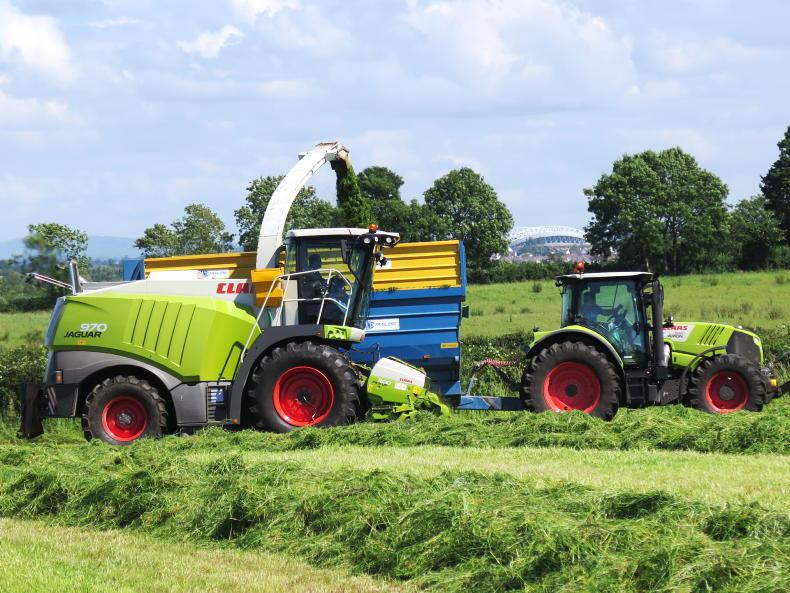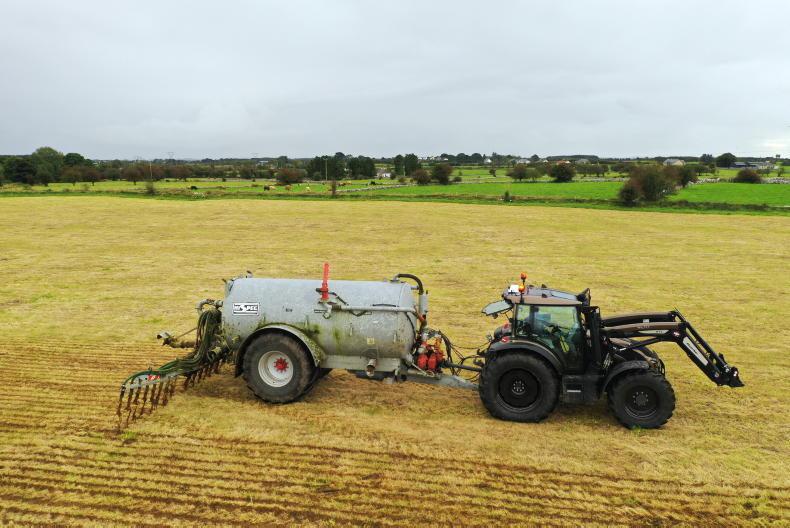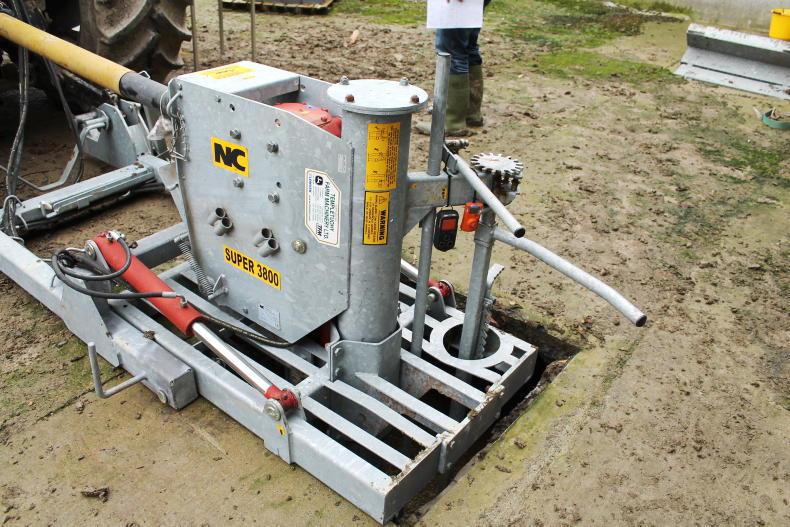According to the Health and Safety Authority (HSA), summer has been the most dangerous time of year on Irish farms for over the past decade.
As we all know, farms are a hive of activity at this time of the year, with farmers and contractors under pressure to get silage cut, slurry spread, fertiliser spread and in some cases reseeding done, on top of the other day-to-day tasks.
This year, silage season has caught many farmers on the hop, kicking off quicker than most expected given the recent spell of good weather quickly changing farmers’ focus from the delayed turnout of livestock to silage cutting in just a matter of weeks.
With this in mind, farm safety needs to be on the top of everyone’s priorities. Below we look at some of the key areas to be mindful of.
Machinery
Both from a safety point of view and from a performance and reliability aspect, all machinery should be properly serviced and maintained before the heavy workload gets under way.
All PTO shafts should be properly guarded and fitted with safety chains. Things liked hydraulic hoses, tyres, wheel studs and towing eyes should also be checked.
Before making repairs to any machine, make sure the tractor’s engine is turned off with the key removed. Where possible, inform others of your intentions and make sure the tractor cannot be engaged or moved while repairs are in progress.
All machines should have working lights, clean glassware and mirrors as well as a flashing beacon.

Summer is the most dangerous time on Irish farms, therefore safety should be everyone's priority.
It is also important that trailer or implement lights are checked regularly and are working correctly. It’s important to remember that lights are not only there to aid you, but to inform other road users of your intentions.
Remember, no children under the age of seven are allowed to travel on a tractor or farm vehicle.
There should be no passengers in the tractor, except where a passenger seat and seatbelt are provided.
Operators must be at least 14 to drive a tractor and must be 16 years of age and hold a category W licence to drive on public roads, providing insurance is in place.
Farmyard and silage pit
As silage cutting gets under way, it is important that the farmyard and route to the silage pit is clear and free from any unnecessary objects.
Space and visibility are important for bystanders and machine operators.
Remember, just because you can see the machine driver, they may not be able to see you.
Where possible, everybody not directly involved in the task should stay at a safe distance, the same goes for pets. Young children need to be supervised and it is recommended that everyone wears hi-vis jackets.

All machinery should be checked regularly and in good working order. This includes PTO shaft covers, lights, brakes, etc.
Safety needs to be paramount around the silage pit.
Silage pits should generally never be more than twice the height of the side walls and at no more than a 45-degree angle. Stand clear of the silage pit when the loader is in operation and when tractors and trailers are entering/exiting the yard. Nobody else should be on the pit while the loader is in operation.
Crushing and overrunning accidents can easily occur when unaccounted people enter a busy silage pit area.
Once silage is in the pit, there are still a huge number of safety risks and things to be mindful of.
Covering the pit can often be the most dangerous time.
Ensure you have steady footing and eliminate the risk of falling from a height.
Similar care needs to be taken when bales are being stacked as tractors and loaders typically tend to be entering/exiting the yard numerous times. While bales are being stacked, stand clear to avoid crushing by machine or by the bale(s).
Once in the field, take care of ground conditions and on hills and slopes, especially while loaded. It only takes seconds for a trailer or slurry tanker to roll over and it is more common than one might think.
Drive at a safe and appropriate speed for the load being towed.
Drivers and operators need to always be on the lookout for low ESB lines and poles.
Notify the relevant machinery operators and have someone contact the ESB in the event that a low ESB wire has been spotted.
Remember, silage harvesters are considerably higher than the majority of other farm machinery and therefore require quite a bit of headroom.
Concerns
Never touch or come into contact with electricity wires and be sure and contact ESB Networks with any concerns.
In the event that a machine does come into contact with an overhead line, it could be fatal for anyone who touches the machine.
Instead, stay at least 10m away.
You or somebody else should contact the ESB Network and get help. In the event the operator must leave the cab, jump well clear and do not make contact with the machine as you exit. Land on your feet and take small baby steps until you are 10m away. Crawling is not a safe option.
Once silage is in the pit, bales are stacked and the fields are cleared, the focus moves to slurry. Slurry, as we all know, is another huge safety concern on Irish farms. Agitating in particular is a task young kids should not be present for.
Where there happens to be any remaining cattle housed, they should be evacuated before agitating takes place.
Before starting, ensure others are aware and, where possible, able to oversee the task from a distance in the event help may be needed. Ventilation is important, so where possible pick a windy day to agitate. The slatted shed should not be entered for at least 30 minutes after agitation starts and, where possible, people should stay out altogether.
All agitation or mixing points should never be left uncovered and unattended. Not only is this a risk to people but animals too.
Before spreading, check the tractor and spreader for any safety hazards.

All slurry agitation points should never be left uncovered and unattended.
The PTO shaft cover should be in place, hitching mechanisms checked for wear, hydraulic hoses checked for damage or wear and wheel studs also checked.
The majority of this advice goes for any trailed or towed implement. It is also good practice to remind family members of such checks and get them to show you what to look out for if unsure.
Finally, farms can be an enjoyable environment providing the right measures are put in place and the right approach is taken regarding safety.
According to the Health and Safety Authority (HSA), summer has been the most dangerous time of year on Irish farms for over the past decade.
As we all know, farms are a hive of activity at this time of the year, with farmers and contractors under pressure to get silage cut, slurry spread, fertiliser spread and in some cases reseeding done, on top of the other day-to-day tasks.
This year, silage season has caught many farmers on the hop, kicking off quicker than most expected given the recent spell of good weather quickly changing farmers’ focus from the delayed turnout of livestock to silage cutting in just a matter of weeks.
With this in mind, farm safety needs to be on the top of everyone’s priorities. Below we look at some of the key areas to be mindful of.
Machinery
Both from a safety point of view and from a performance and reliability aspect, all machinery should be properly serviced and maintained before the heavy workload gets under way.
All PTO shafts should be properly guarded and fitted with safety chains. Things liked hydraulic hoses, tyres, wheel studs and towing eyes should also be checked.
Before making repairs to any machine, make sure the tractor’s engine is turned off with the key removed. Where possible, inform others of your intentions and make sure the tractor cannot be engaged or moved while repairs are in progress.
All machines should have working lights, clean glassware and mirrors as well as a flashing beacon.

Summer is the most dangerous time on Irish farms, therefore safety should be everyone's priority.
It is also important that trailer or implement lights are checked regularly and are working correctly. It’s important to remember that lights are not only there to aid you, but to inform other road users of your intentions.
Remember, no children under the age of seven are allowed to travel on a tractor or farm vehicle.
There should be no passengers in the tractor, except where a passenger seat and seatbelt are provided.
Operators must be at least 14 to drive a tractor and must be 16 years of age and hold a category W licence to drive on public roads, providing insurance is in place.
Farmyard and silage pit
As silage cutting gets under way, it is important that the farmyard and route to the silage pit is clear and free from any unnecessary objects.
Space and visibility are important for bystanders and machine operators.
Remember, just because you can see the machine driver, they may not be able to see you.
Where possible, everybody not directly involved in the task should stay at a safe distance, the same goes for pets. Young children need to be supervised and it is recommended that everyone wears hi-vis jackets.

All machinery should be checked regularly and in good working order. This includes PTO shaft covers, lights, brakes, etc.
Safety needs to be paramount around the silage pit.
Silage pits should generally never be more than twice the height of the side walls and at no more than a 45-degree angle. Stand clear of the silage pit when the loader is in operation and when tractors and trailers are entering/exiting the yard. Nobody else should be on the pit while the loader is in operation.
Crushing and overrunning accidents can easily occur when unaccounted people enter a busy silage pit area.
Once silage is in the pit, there are still a huge number of safety risks and things to be mindful of.
Covering the pit can often be the most dangerous time.
Ensure you have steady footing and eliminate the risk of falling from a height.
Similar care needs to be taken when bales are being stacked as tractors and loaders typically tend to be entering/exiting the yard numerous times. While bales are being stacked, stand clear to avoid crushing by machine or by the bale(s).
Once in the field, take care of ground conditions and on hills and slopes, especially while loaded. It only takes seconds for a trailer or slurry tanker to roll over and it is more common than one might think.
Drive at a safe and appropriate speed for the load being towed.
Drivers and operators need to always be on the lookout for low ESB lines and poles.
Notify the relevant machinery operators and have someone contact the ESB in the event that a low ESB wire has been spotted.
Remember, silage harvesters are considerably higher than the majority of other farm machinery and therefore require quite a bit of headroom.
Concerns
Never touch or come into contact with electricity wires and be sure and contact ESB Networks with any concerns.
In the event that a machine does come into contact with an overhead line, it could be fatal for anyone who touches the machine.
Instead, stay at least 10m away.
You or somebody else should contact the ESB Network and get help. In the event the operator must leave the cab, jump well clear and do not make contact with the machine as you exit. Land on your feet and take small baby steps until you are 10m away. Crawling is not a safe option.
Once silage is in the pit, bales are stacked and the fields are cleared, the focus moves to slurry. Slurry, as we all know, is another huge safety concern on Irish farms. Agitating in particular is a task young kids should not be present for.
Where there happens to be any remaining cattle housed, they should be evacuated before agitating takes place.
Before starting, ensure others are aware and, where possible, able to oversee the task from a distance in the event help may be needed. Ventilation is important, so where possible pick a windy day to agitate. The slatted shed should not be entered for at least 30 minutes after agitation starts and, where possible, people should stay out altogether.
All agitation or mixing points should never be left uncovered and unattended. Not only is this a risk to people but animals too.
Before spreading, check the tractor and spreader for any safety hazards.

All slurry agitation points should never be left uncovered and unattended.
The PTO shaft cover should be in place, hitching mechanisms checked for wear, hydraulic hoses checked for damage or wear and wheel studs also checked.
The majority of this advice goes for any trailed or towed implement. It is also good practice to remind family members of such checks and get them to show you what to look out for if unsure.
Finally, farms can be an enjoyable environment providing the right measures are put in place and the right approach is taken regarding safety.









 This is a subscriber-only article
This is a subscriber-only article










SHARING OPTIONS: